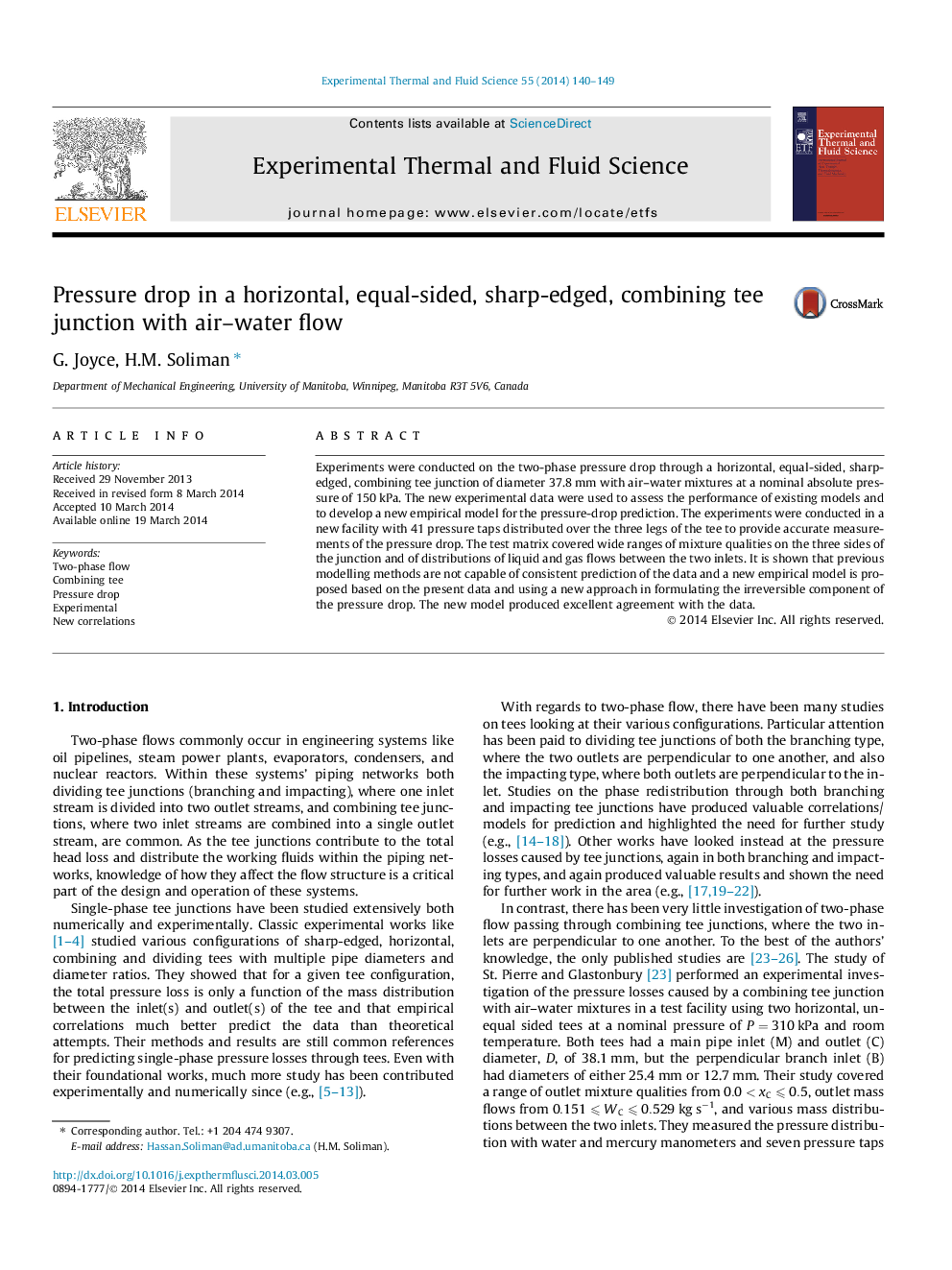| Article ID | Journal | Published Year | Pages | File Type |
|---|---|---|---|---|
| 651709 | Experimental Thermal and Fluid Science | 2014 | 10 Pages |
Abstract
Experiments were conducted on the two-phase pressure drop through a horizontal, equal-sided, sharp-edged, combining tee junction of diameter 37.8Â mm with air-water mixtures at a nominal absolute pressure of 150Â kPa. The new experimental data were used to assess the performance of existing models and to develop a new empirical model for the pressure-drop prediction. The experiments were conducted in a new facility with 41 pressure taps distributed over the three legs of the tee to provide accurate measurements of the pressure drop. The test matrix covered wide ranges of mixture qualities on the three sides of the junction and of distributions of liquid and gas flows between the two inlets. It is shown that previous modelling methods are not capable of consistent prediction of the data and a new empirical model is proposed based on the present data and using a new approach in formulating the irreversible component of the pressure drop. The new model produced excellent agreement with the data.
Related Topics
Physical Sciences and Engineering
Chemical Engineering
Fluid Flow and Transfer Processes
Authors
G. Joyce, H.M. Soliman,
